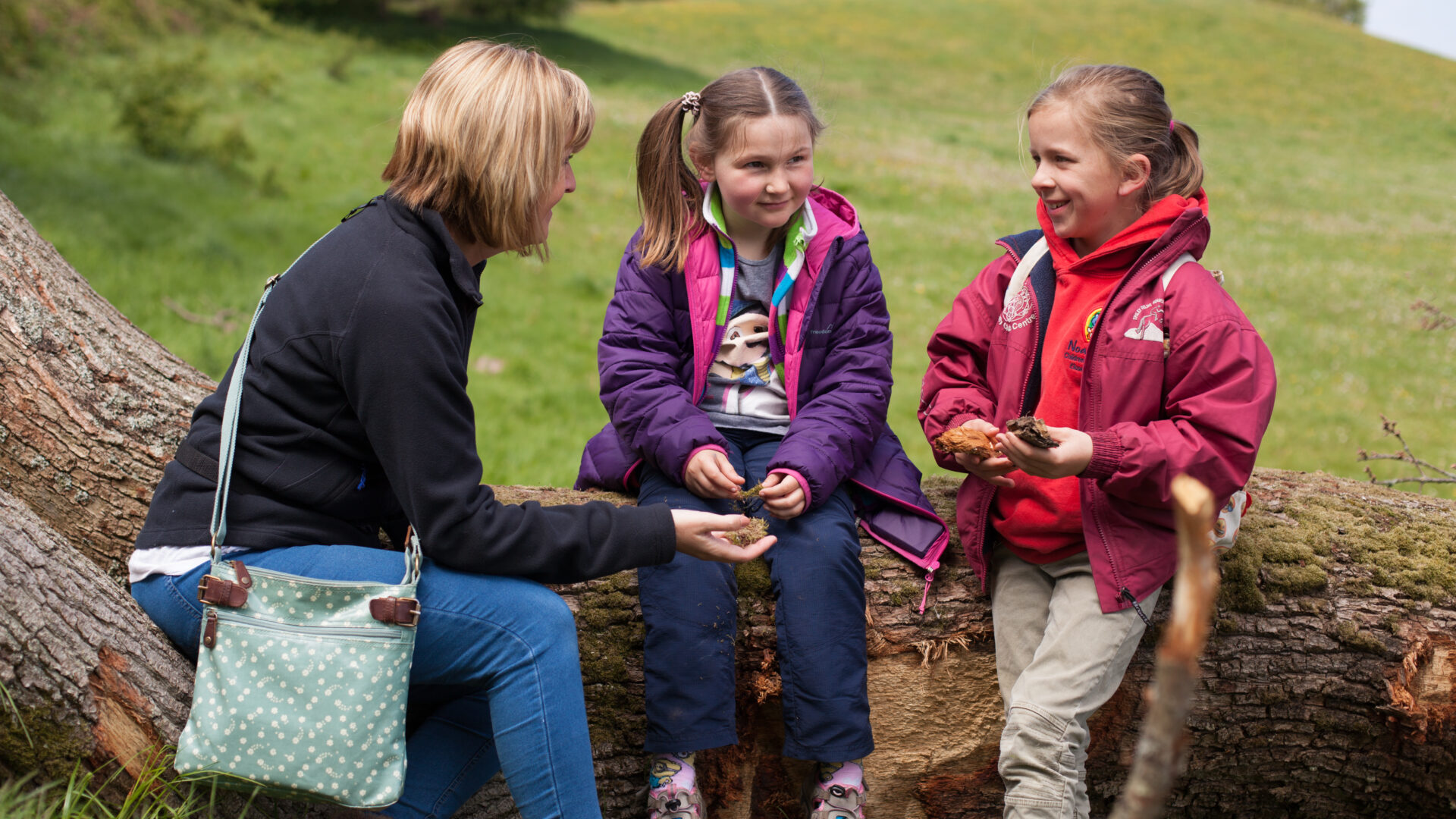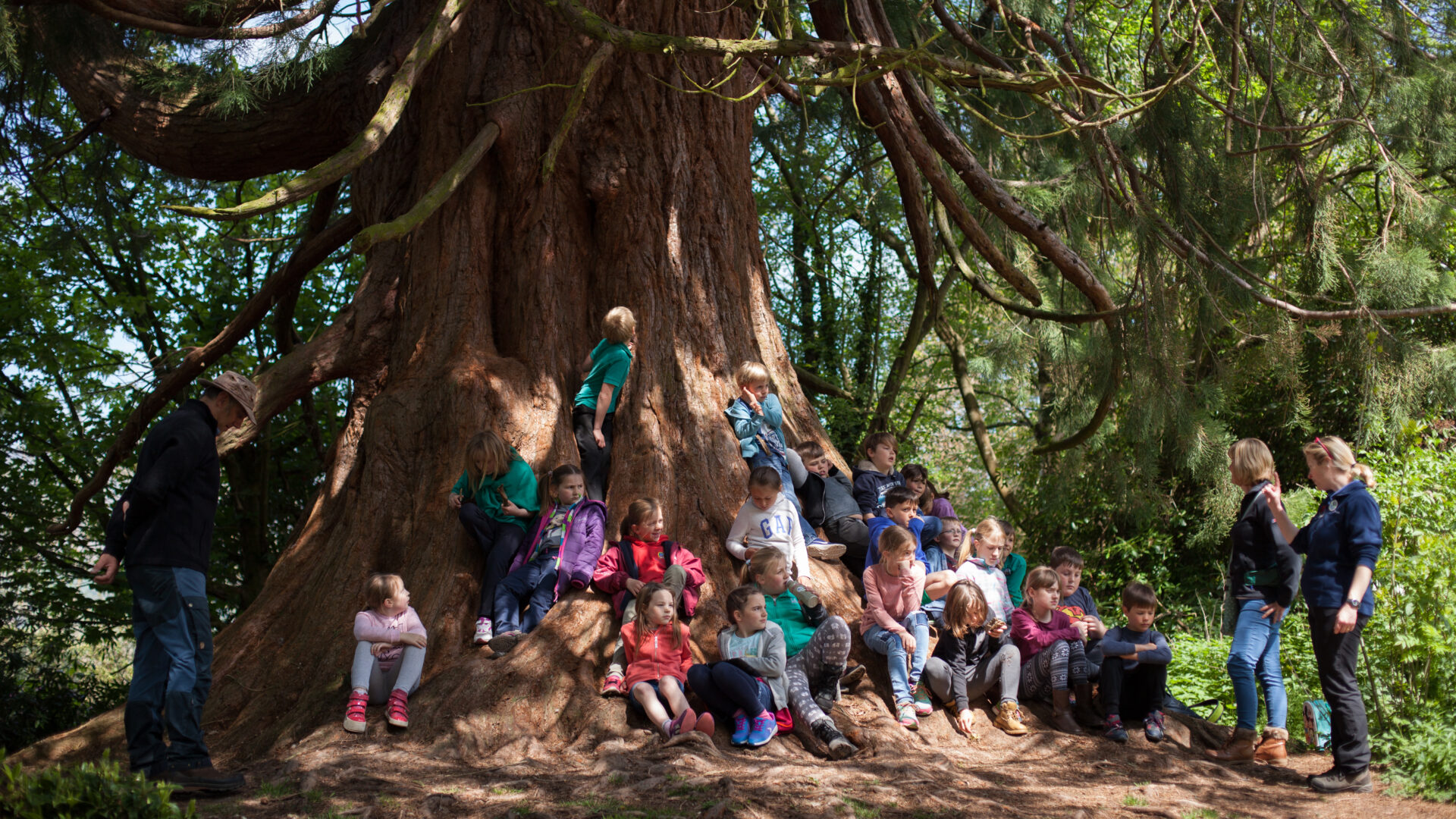National Parks Green Pathways is a collection of programmes to support careers in the Green Economy. One such Green Pathways programme is called Green Beacons. Green Beacons is all about training and supporting National Parks apprentices, employees, partners and volunteers to be outdoor youth leaders.
A valuable part of Green Beacons work is training teachers to be outdoor youth leaders and how to integrate the outdoors and nature connectedness into the national curriculum.
Getting young people out of the classroom and into the outdoors makes learning come alive. Being in wild places ignites imagination and fires ambition, providing the essential spark for a lifetime of appreciating, caring for, and working in, the natural world.
Alison’s Story
Alison Weaver is a Year 3 class teacher Crickhowell Community Primary School, in the heart of the Bannau Brycheiniog (Brecon Beacons) National Park, Wales. She explains how utilising the National Park has galvanised children’s learning experience.
‘I knew of the Pembrokeshire Coast National Park’s outdoor school programme and also about beach schools in North Wales,’ says Alison. ‘It made me question whether our school was making the most of our location.’
At the time – around eight years ago – the Welsh government had introduced a new literacy and numeracy framework and Alison had acquired funding to investigate learning projects. She contacted Brecon Beacons’ education officer, Hayley Sharp, and they devised a scheme of work for Years 1-6. ‘The six lessons for each year group had a high focus on using the outdoors, linked to the national literacy and numeracy strategy, and were an immediate success,’ says Alison. ‘One session about myths and legends involved an expedition over the mountains, where we stopped to do some story-telling, as well as discuss the landscape. We continued the learning back at the National Park centre by making journey sticks.’
Since then, National Parks officers have visited the school and given a talk about bees and bats, and children have taken part in den-building and made mammal shelters in the school grounds. Alison has also undertaken training with Brecon Beacons National Park on how to lead school groups in the outdoors. This gave her the confidence to lead a trip to a local site, Table Mountain, to inspect the Iron Age fort there.
‘Just seeing the children experience the fort, rather than reading about it or looking at it on screen, was everything,’ she says. ‘Because the National Parks are really good with their safety assessments, I always feel safe in their hands – even doing things like river studies. Now we’ve started doing a Year 4 one-night residential at a youth hostel in the park and staff joined us for a few sessions and lead some of the activities. It’s great to see how far you can take it.’

Matthew’s Story
Matthew Dampier is headteacher at Droxford Junior School in the west of the South Downs National Park. He describes how Ambassador School status – as a pilot scheme – has benefitted his school and how he’s using that experience to benefit others.
‘I’ve been at Droxford 13 years and when they announced the village would be included in the National Park, 11 years ago when the park was created, I was delighted,’ says Matthew. ‘I knew it would give us added gravitas, to use it in a meaningful context for our curriculum. I grew up on a council estate in Gosport in Hampshire and would have loved to have had the opportunity to experience something like the South Downs as a background for my learning.’
Working with the National Park’s education officers, the school wrote a series of Geography units of work based on national curriculum requirements, taking into account the school’s location and the wider context of what it means to be in a National Park. ‘One of the first units was a geography one called Precious Places, which we still use now. I’m proud to say it was the first case study by the National Park to go on their education website,’ says Matthew.
The collaboration enabled children to study the National Park, its website, and to investigate their local area. ‘As part of their English lessons we get the children to write an engaging, formal letter to all 15 National Parks, talking about their curriculum and asking for information about each park,’ he says. ‘They always write back with great information which the children use to help with presentations on how our National Parks vary in terms of landscape or wildlife, or pressures due to tourism and climate change.’
South Downs education officers Jonathan Dean and Amanda Elms assisted Matthew to develop and deliver additional curriculum experiences and knowledge, based on challenges faced in the South Downs National Park. From this, outdoor learning has expanded – from conducting depth and flow tests in the nearby River Meon and learning all about the river from source to sea, to a 12k walk to Old Winchester Hill and back.
‘Children go up the hill with their OS maps and can see the living geography in front of them as well as exploring the Iron Age fort there,’ Matthew says. ‘We’ve walked along the former railway line, which has a World War 2 link to Winston Churchill and D-Day, as well as learn about the evacuees who came here from Gosport during the Second World War.’
After developing the school grounds to accommodate more outdoor learning and running successful camping sessions for Year 3s on the school field, Matthew is hoping to bring children from less rural areas, such as his former hometown, to stay at the school. As a South Downs Ambassador School, he also showcases to others how linking to their local National Park can enrich learning.
‘The South Downs Park authority are always thinking about collaborating with us,’ he says. ‘They once asked if we’d like to help with some water vole releases. It’s not part of the curriculum but I knew the children would love it, so we went. You probably wouldn’t even hear about that kind of opportunity if you weren’t involved with the National Park. It was a fantastic enrichment experience for all concerned.’
Rachael’s Story
Rachael Lyon is Engagement Team Manager for the Peak District National Park. She and her team have devised the park’s Ambassador Schools programme, a free, online resource to help teachers deepen children’s connection to the Peak District and their local wild places.
‘Lots of people don’t have opportunity to connect with nature and the outdoors. There are lots of reasons why this might be the case and it’s surprising how many young people are deprived of these experiences in all sorts of ways,’ says Rachael.
‘We wanted to help young people and the community of schools become more aware of their National Park. It’s not only so they can see this amazing place which needs looking after, but also learn they can take action locally to protect and care for the natural spaces they love.’
For Rachael, it’s about connecting the real world to the things you learn in school. ‘For example, learning about a river in a classroom is so different to going and seeing a river in action, putting your hands in to feel how cold it is and experiencing the sensations of its movement.’ Schools can sign up to the Ambassador programme for free, to access teaching and learning resources, including ideas for art or history lessons which link to the Peak District.
‘We ask Ambassador Schools to do one thing, per class, per year, a very achievable goal,’ says Rachael. This could mean something practical, like running their own litter pick, identifying the trees near their homes, painting a natural landscape or devising their own version of the Peaks’ tradition of Well Dressing.
‘We then hope they will take it forwards to come and visit the park or perhaps decide to join activities such as the John Muir Award,’ she says. ‘As an Ambassador School they will shine a light for others to follow. We’re really looking forward to seeing the different ways schools will use this in the future.’
